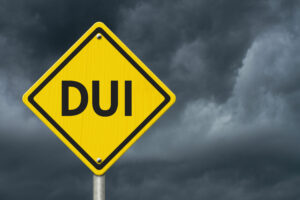
Drunk driving is a major problem in Minnesota and across the US, and while punishing drunk drivers for their actions is necessary, perhaps more important is ensuring those individuals get the help and resources they need to make smarter choices in the future. However, many drunk drivers in Minnesota are not getting that message, and they are getting back behind the wheel after drinking despite already being convicted of a previous DWI. Why is recidivism so high in Minnesota, and what can be done to fix this?
DUI Recidivism In Minnesota
Although there aren’t any very recent statistics on drunk driving recidivism in the US, previous reports paint a dark picture for Minnesota. Back in 1991, the National Highway Traffic Safety Administration found that Minnesota had the highest rate of recidivism in the nation, as 41% of drivers arrested for DWI had a previous DWI conviction on their record. A look at drunk driving statistics by MinnPost uncovered similar trends in 2017.
Cracking down on repeat DUI offenders once again gained attention after a drunk driver crashed into a patio at Park Tavern earlier this month, killing two people in St. Louis Park. The driver already had five DUI convictions on his record, but was driving legally after completing time with an ignition interlock device. That driver is one of about 25,000 Minnesotans who have at least five driving while intoxicated convictions on their record.
The debate rages on as to how to best cut into these recidivism rates, but no clear answer is in sight. The obvious first choice is to increase punishments for those convicted of driving drunk. Longer jail sentences and driver’s license restrictions would in theory help to keep drunk drivers off the road, but as we have seen in our line of work and police officers can attest to, you don’t need a valid license to drive drunk. Many people with multiple DWIs on their record do not have a valid license, yet they still end up getting behind the wheel after drinking.
Others suggest more oversight with the ignition interlock program. Alongside the in-car device, advocates suggest required courses or e-learning sessions where the driver really learns about the impact of drunk driving and how they can make better choices in the future. Getting drivers the help they need to kick an addiction or to make better decisions is essential, but this will require time, effort and funding from the state. Lawmakers who want to appear tough on drunk driving may prefer dishing out stronger punishments than really taking the time to carve out a program that helps to solve the problem at its core because it’s quicker and simpler.
We always try to ensure that our clients understand what’s at stake now and in the future if they were to get behind the wheel after drinking. We have connections in the substance abuse community and can help you get the assistance you need to start building a better future, but you need to want this help. Accept responsibility for your actions and take the first step by seeking out help instead of just feeling sorry for yourself that you got caught.
The penalties for subsequent DWIs are severe, and it’s much harder to earn leniency from a judge if you’ve already been convicted of the same crime in the past. We’re here to help in any way we can, but we hope that you’re only our client once. To learn more about how we can work to help you overcome a first or a most recent DUI arrest, or for information on where to turn for counseling services, reach out to the team at Appelman Law Firm today at (952) 224-2277.





